Making Japanese Sword at Wordsmith Workshop
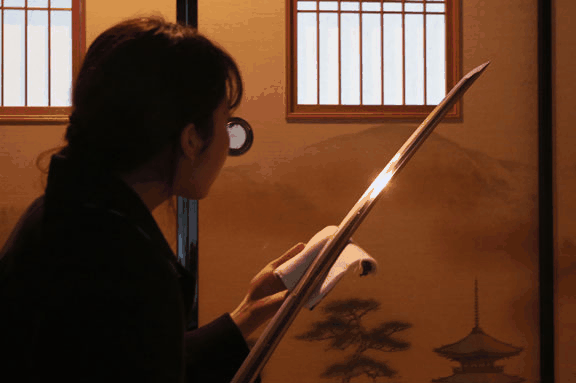
The roll of Japanese swords in Japanese culture
Processes
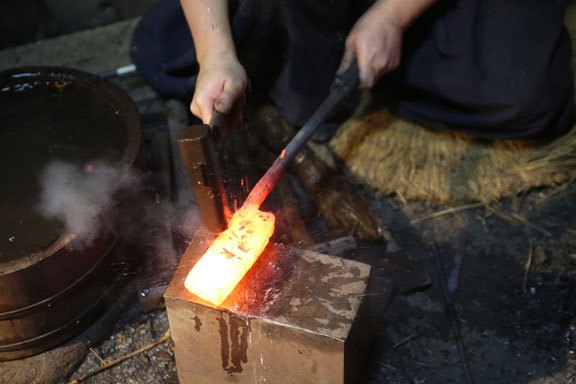
[STEP 1] Hardening
When swordsman makes a sign, you hammer the material. This is called as “Muko-zuchi”. The word “Muko-zuchi” describes the method by which swordsman and his helper alternately strike the body of the blade with a Tsuchi, and this has become the root of the word ‘Aizuchi wo utsu (chiming in). To achieve perfect “Muko-zuchi”, long-term training is required to be able to make a strong and light strike depending on the condition of steel.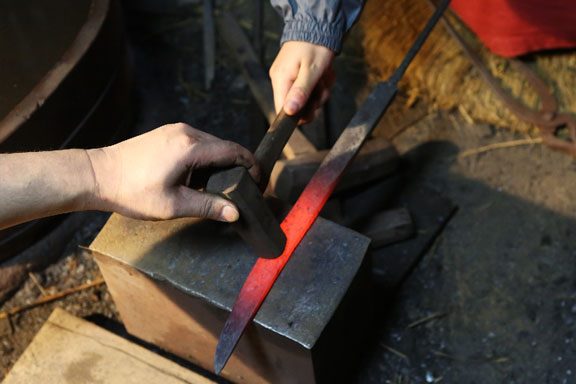
[STEP 2] Forging
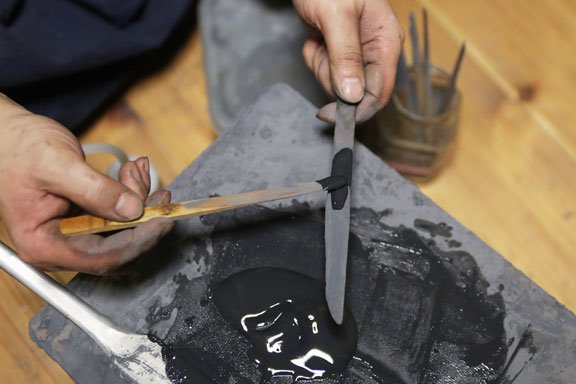
[STEP 3] Soil Coating
Main material of Yakiba-tsuchi soil (durabul and sticky clay) which is mixed with charcoal, polishing powder, and water.
The ratio of materials of “Yakiba-tsuchi” varies depending on the condition of quenching or target quality.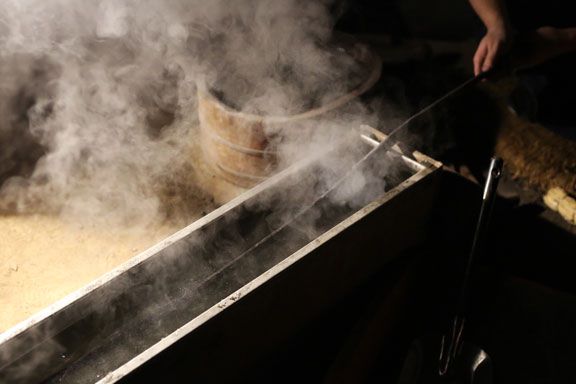
[STEP 4] Quenching, Tempering
The thin part of clay applied with changes to hard steel, on the other hand, the thick part of clay does not harden rapidly because
the part is cooled slowly. The hardness and softness boundary of steel will be “Hamon” (temper pattern of a sword blade).
Reheat with appropriate temperature (about 190°C), remove stress occured by “Yakiire” (quenching), and recover toughness.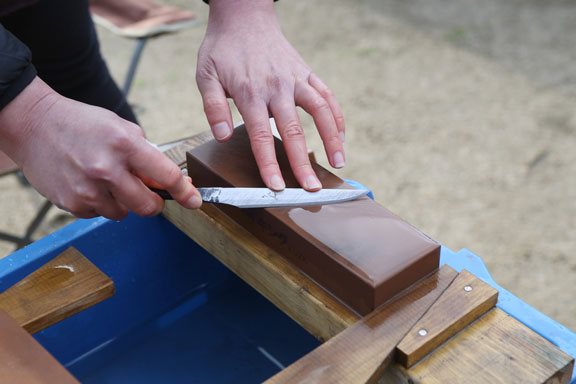
[STEP 5] Sharpening
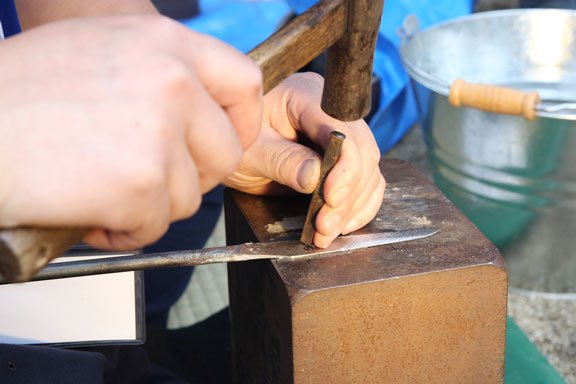
[STEP 6] Engraving Inscription
In the experience, your desired characters can be written in the blade area.Japanese Swords Making Experience Plans
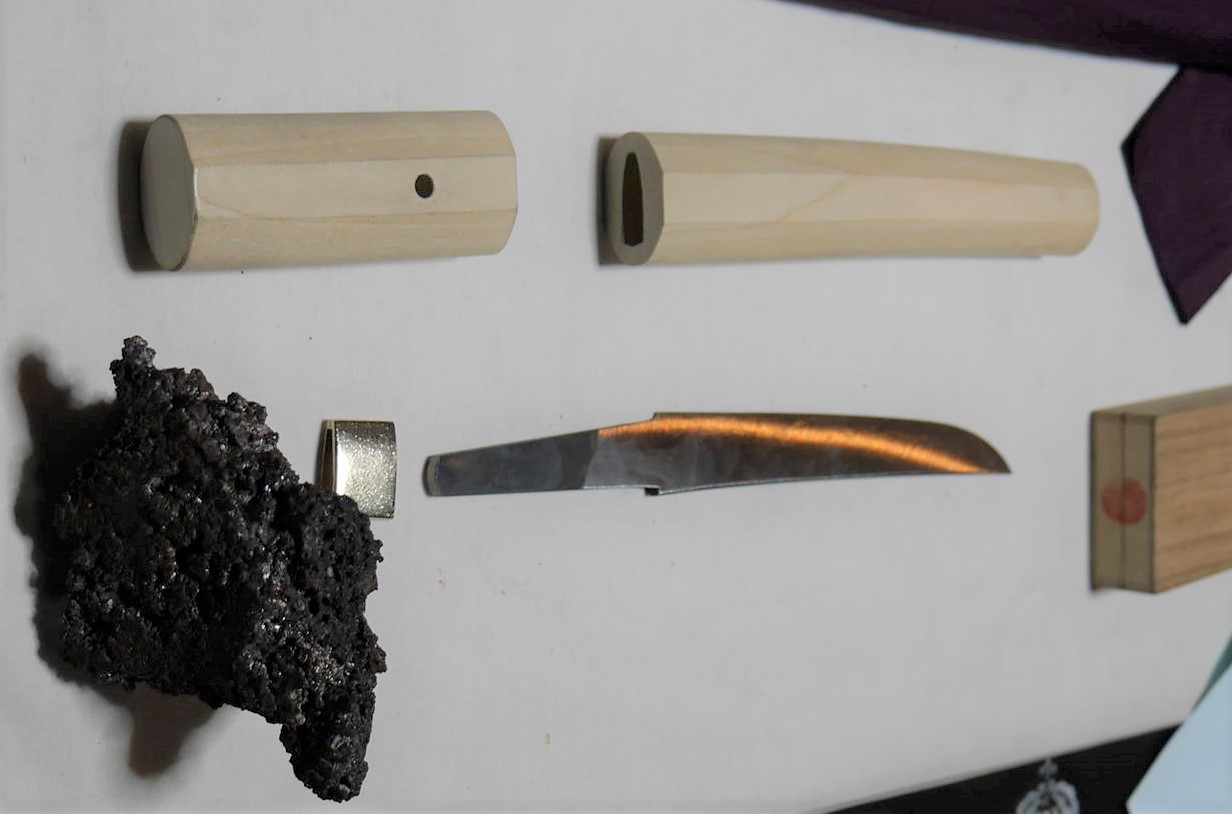
Make Japanese sword (Short sword) - ¥550,000 for three days
You also can learn about history of Japanese swords while you are taking classes.
In this course, you experience whole processes of making Japanese swords.
The finished products will be delivered by mail.
*Minimum number of participants : 1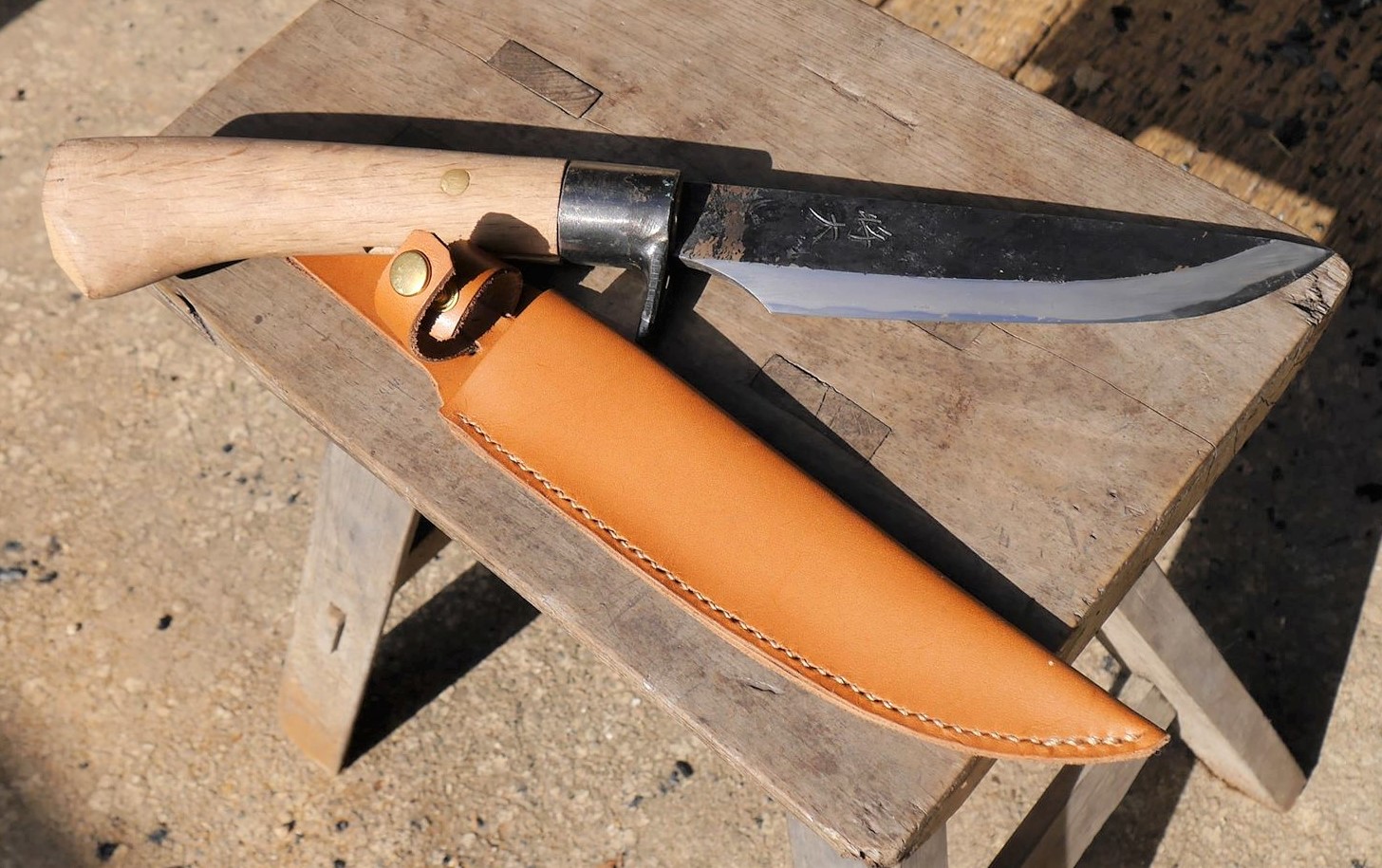
Making Japanese knife and leather case : ¥71500 for one day
under coaching of swordsman for one day at workshop.
You also can learn about history of Japanese swords while you are taking classes.
In this course, you experience forging, annealing, quenching, tempering, sharpening, and engraving.
If you purchase ready-made leather case, the price will be ¥55,000 for half a day.
*Minimum number of participants : 1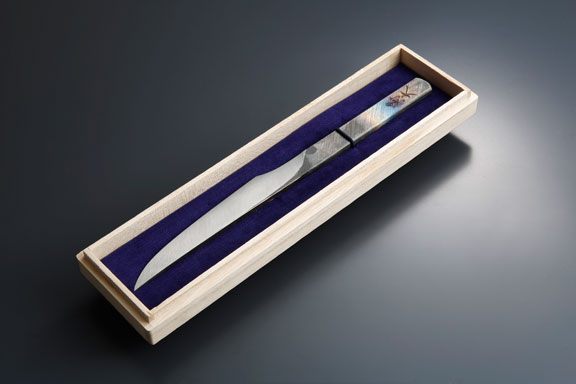
Making small sword using "Tamahagane" : ¥43450 for half a day
under coaching of swordsman for half a day at workshop.
You also can learn about history of Japanese swords while you are taking classes.
In this course, you experience forging, quenching, tempering, sharpening, and engraving.
*Minimum number of participants : 1
Japanese Sword Experience
Japanese swords have been weapons and also been symbols of Japanese spirit since ancient times.
Japanese swords are enshrined as object of spirits in Shinto shrines. Moreover, Japanese swords, which were held not only by Bushi (Samurai) but also by ordinary people, often appeared at a turning point of life.
Even now, swords are placed on the chest of a dead person or a newborn baby to keep them away from eveil. During the war, pilots believed that swords protected them from dangers so they took swords with them.
After the war, many swords were collected because posessions of swords were prohibited other than art so that we do not have much chance to see swords nowadays. However, we still can see Japanese swords as a symbol of Japanese spirits through remainig customs.
Main material “Tamahagane” is repeatedly hammered with a big Tsuchi (hammer) and is stretched with mixture of hard and soft iron.
The stretched iron is shaped into a sword by hand. Japanese sword is consist of three parts; ”Mune” (opposit side of blade), “Shinogi-suji” (The top of a part stretched sideways near “Mune”.), and “Hasaki” (the edge of the blade). Swrodsmith makes this shape without any tools like rulers. In addition, swordsmith images finished product and makes warpage in advance because the sword becomes warped when being quenched.
Swordsmith makes their own “Yakiba-tsuchi” soil mixture (soil used for quenching) which are applied to swords as preparation for “Yaki-ire” (quenching) to rapidly cool the heated blade with water or other liquid.
The whole sword is heated to 750-800℃ and rapidly cooled to harden materials and increase strength.
Several types of grinding stones are used to improve sharpness of blade and to emphasize its beauty.
Swordsman’s name is engraved in the center of the handle (called as “NAKAGO”) and Japanese sword is completed.
You make your own original Japanese sword (Approx. 20cm in length) under coaching of swordsman for three days at workshop.
You make your own original Japanese style sword (Approx. 12cm in length) and leater case
You make your own original small sword (Approx. 8 cm in length)